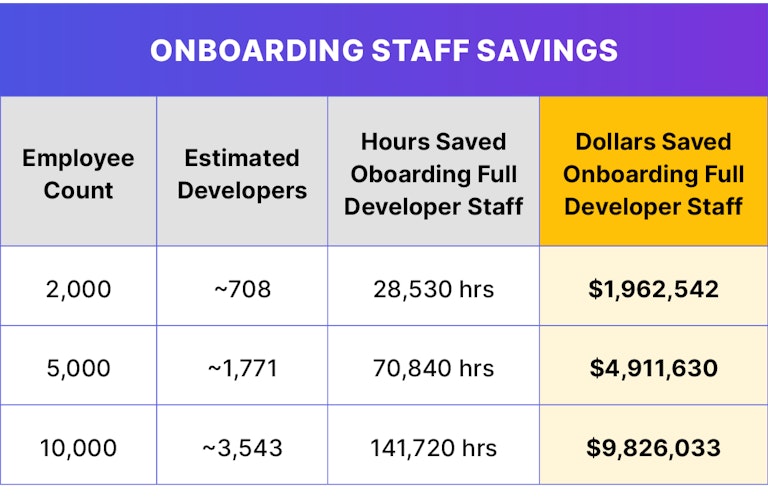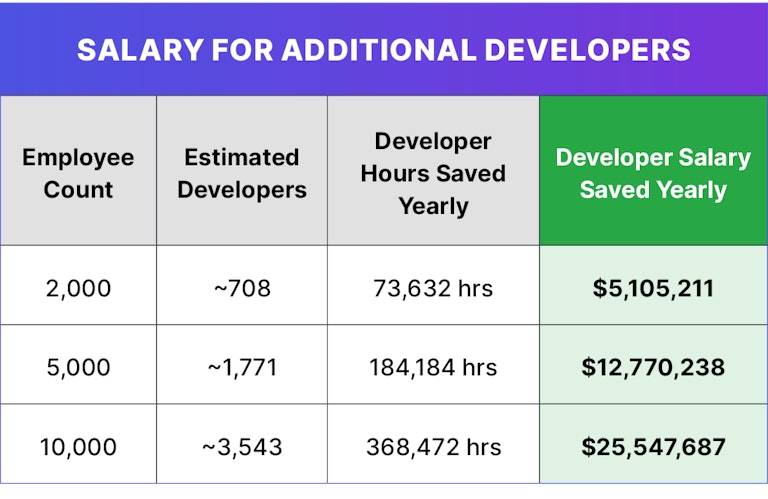The Dollars and Cents Argument for CDEs

If you’re a software developer trying to convince your organization to adopt a Cloud Development Environment (CDE), there are plenty of good points to argue. We’ve outlined a few of them throughout this blog series, summarizing Coder’s recently-released Cloud Development Environment Adoption Report.
One argument is how CDEs simplify and optimize the onboarding process. The largest percentage of respondents in our survey of developers and business leaders listed this as a top benefit CDEs provide.
CDEs also keep companies’ code secure. In the survey, security was the #1 consideration when selecting tools, with 43.9% of respondents indicating it as a key feature when selecting CDEs.
Third, CDEs improve the developer experience. Developers using licensed CDEs reported a 15% higher score in overall quality of work life than developers in conventional environments.
While each of these arguments should hold sway with specific decision-makers within an organization, there’s a fourth point that certainly should catch the ear of stakeholders in charge of budgets: CDEs make economic sense. In the CDE Adoption Report, we calculated some of the expected time and cost savings CDEs provide based on data culled from our survey. Some of the biggest chunks of savings start with the time organizations can get back during the process of onboarding developers and contractors when they first start work or change projects.
In conventional enterprise environments, it can take weeks to get developers up and running. With CDEs, all the development tools, services, and infrastructure developers need can be made accessible through a web browser, or connecting through an extension on your local IDE. With a configured CDE, IT departments can give developers a URL and have them sign on. This cuts the onboarding time down to minutes.
Assuming that developers compose about 35.4% of an average staff and take, on average, 80 hours of time to first commit, organizations with 2,000 employees can save nearly $2 million in onboarding costs. Savings for organizations with 10,000 employees swell up to nearly $10 million.

However, onboarding-specific savings don’t stop there. Once developers are onboarded to development environments, they still need to be given access to new tools and new projects on an ongoing basis. CDEs shorten the onboarding time for these tasks, simultaneously removing the hassle of constant tool switching in and out of development platforms since all of the tools are hosted in the same cloud environment.
To break it down with dollar amounts, if each developer saved two hours each week on improved build times and reduced tool maintenance, an organization with 2,000 employees and 700 developers would gain back more than 70,000 hours of development time and over $5 million annually based on time saved in developer salaries. A larger organization with 3,500 developers would net out savings of more than $25.5 million per year.

Moving development into the cloud generates many other benefits for organizations. It makes development easier to troubleshoot, improves accessibility, provides more flexibility in tool choices, ensures compatibility with production and staging environments, and reduces “drift” in development configurations.
Each of these contributes to an overall improvement in developer experience and software quality. Each can stand as a strong argument for making CDEs a part of an organization’s culture.
But behind it all is the issue of dollars and cents. Money talks – and it’s talking loudly in favor of CDEs.
To dive deeper into the world of CDEs, get up to speed with the rest of the blogs in our CDE Adoption Report blog series:
Subscribe to our newsletter
Want to stay up to date on all things Coder? Subscribe to our monthly newsletter and be the first to know when we release new things!


